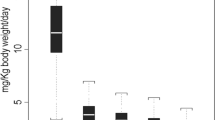Abstract
Long-term clinical aspects after kidney transplantation using cyclosporine (CsA) were studied in 33 patients who received kidney grafts from one haplotype identical living related donor and who were followed for at least one year. Both actual graft and patient survival rates were 97 per cent at one year. Incidence and severity of acute rejection were reduced to a greater extent in patients treated with CsA than in patients treated with azathioprine (AZ). The incidence of infections was low, and no serious bacterial infection occurred in these 33 patients. In 17 of 33 patients with a deteriorative graft function caused by intractable nephrotoxicity, CsA was converted to AZ. The mean serum creatinine level of converted patients was significantly higher than that of patients maintained with CsA at each time when a dose of CsA was stepwise reduced from 14 mg/kg/day to 6 mg/kg/day. Conversion to AZ improved graft function dramatically, although it resulted in reversible acute rejections in 4 patients. CsA induced hepatotoxicity occurred in 10 patients, but in all normal liver function was restored with decrease in the dose. The potent immunosuppressive effect of CsA compensates for its side effects. However, CsA should be converted to AZ when the chronic nephrotoxicity persists at a late stage of post-transplantation.
Similar content being viewed by others
References
Dreyfuss M, Harri E, Hofmann H, Kobel H, Pache W, Tscherter H. Cyclosporin A and C. New metabolites from Trichoderma polysporum. Rifai Eur J App Microbiol 1976; 3: 125–133.
Borel JF, Lazary S, Stahelin H. Immunosuppressive effects of ovalicin-semicarbazone. Agent Action 1974; 4: 357–363.
Calne RY, Rolles K, Thiru S, McMaster P, Craddoc GN, Aziz S, White DJG, Evans DB, Dunn DC, Henderson RG, Lewis P. Cyclosporin A initially as the only immunosuppressant in 34 recipients of cadaveric organs; 32 kidneys, 2 pancreases, and 2 livers. Lancet 1979; 2: 1033–1036.
Oka T, Ohmori Y, Akikawa I, Ioka J, Kadotani Y, Nomura H, Suzuki S, Hashimoto I. Living related kidney transplants treated with cyclosporine. Transplant Proc 1983; 15: 2501–2506.
Hamilton DV, Evans DB, Shiru S. Toxicity of cyclo-sporin A in organ grafting. In: White DJG, eds. Cyclosprin A. Amsterdam: Elsvier Biomedical. 1982; 393–411.
Shell AG, Hall BM, Tiller DJ, Stephen MS, Harris JP, Duggin GG, Horvath JS, Johnson JR, Roger JR, Boutas J. Australian trial of cyclosporin (CyA) in cadaveric donor renal transplantation. Transplant Proc 1983; 15: 2485–2489.
Sells RA. A prospective randomized substitutive trial of cyclosporine as a prophylactic agent in human renal transplant rejection. Transplant Proc 1983; 15: 2496–2500.
Stiller C. London, Canada, for the Canadian transplant study group. The Canadian trial of cyclosporine;/ cyclosporine therapy compared to standard immunosuppression in renal transplants; an exploration of nephrotoxicity. Transplant Proc 1983; 15: 2479–2484.
Starzl TE, Hakala TR, Rosenthal JT, Iwatsuki, Shaw BW Jr. The Colorado-Pittsburgh cadaveric renal transplantation study with cyclosporine. Transplant Proc 1983; 15: 2459–2462.
Najarian JS, Strand M, Fryd DS, Ferguson RM, Simmons RL, Ascher NL, Sutherland DER. Comparison of cyclosporine versus azathioprine antilymphocyte globulin in renal transplantation. Transplant Proc 1983; 15: 2463–2468.
Kahan BD, VanBuren CT, Frechner SM, Payne WD, Boileau M, Kerman H. Cyclosporine immunosuppression mitigates immunologic risk factors in renal allotransplantation. Transplant Proc 1983; 15: 2469–2478.
Dummer JS, Hardy A, Poorsatter A, Ho M. Early infection in kidney, heart and liver transplant recipients on cyclosporine. Transplantation 1983; 36: 219–223.
McMaster P, Haynes IG, Michael J, Adu D, Valssis T, Roger S, Turney J, Stock S, Buckels J, Mackintosh P, Ezzibdeh M. Cyclosporine in cadaveric renal transplantation; A prospective randomized trial. Transplant. Proc 1983; 15: 2523–2527.
Bunzendahl H, Wonigeit K, Klempnauer J, Brolsch C, Pichimayr R. Cyclosporine and steroids; Effects on the clinical course after renal allotransplantation. Transplant Proc 1983; 15: 2531–2534.
Introna M, Allavena P, Spreafico F, Mantovani A. Inhibition of human natural killer activity by cyclo-sporin A. Transplantation 1981; 31: 113–116.
Gui XE, Ho M, Camp PE. Effect of cyclosporin A on murine natural killer cells. Infect Immunol 1982; 36: 1123–1127.
Klintmalm G, Ringden O, Groth CG. Clinical and laboratory sign in nephrotoxicity and rejection in cyclosporine treated renal allograft recipients. Transplant Proc 1983; 15: 2815–2820.
Frechner SM, VanBuren C, Kerman RH, Kahan BD. The nephrotoxicity of cyclosporine in renal transplant recipients. Transplant Proc 1983; 15: 2689–2694.
Morris PJ, French E, Dunnill MS, Hunnisett AGW, Ting A, Thompson JF, Wood RFM. A controlled trial of cyclosporine in renal transplantation with conversion to azathioprine and prednisolone after three months. Transplantation 1983; 36: 273–277.
Flechner SM, VanBuren CT, Kerman R, Kahan BD. The effect of conversion from cyclosporine to azathioprine immunosuppression for intractable nephrotoxicity. Transplant Proc 1983; 15: 2869–2873.
Land W, Castro LA, Hillebrand GP, Gunther K, Gokel JM. Conversion rejection consequences by changing the immunosuppressive therapy from cyclosporine to azathioprine after kidney trans-plantation. Transplant Proc 1983; 15: 2857–2861.
Wood RFM, Thompson JF, Allen NH, Ting A, Morris PJ. The consequence of conversion from cyclosporine to azathioprine and prednisolone in renal allograft recipients. Transplant Proc 1983; 15: 2862–2868.
Rodger RSC, Turney JH, Haines I, Michael J, Adu D, McMaster P. Cyclosporine and liver function in renal allograft recipients. Transplant Proc 1983; 15: 2754–2756.
Klintmalm GBG, Iwatsuki S, Starzl TJ. Cyclosporine A hepatotoxicity in 66 renal allograft recipients. Transplantation 1983; 35: 488–489.
Keown RA, Stiller CR, Sincleair N, Carruthers G, Howson W, Stawecki M, McMichael J, Koegler J, McKenzie N, Wall W. The clinical relevance of cyclosporine blood level as measured by radioim-munoassay. Transplant Proc 1983; 15: 2438–2441.
Author information
Authors and Affiliations
Rights and permissions
About this article
Cite this article
Yasumura, T., Ohmori, Y., Aikawa, I. et al. Improved outcome of renal transplantation with cyclosporine compared with azathioprine —Experience in 33 recipients followed for over one year—. The Japanese Journal of Surgery 16, 181–188 (1986). https://doi.org/10.1007/BF02471091
Received:
Issue Date:
DOI: https://doi.org/10.1007/BF02471091




